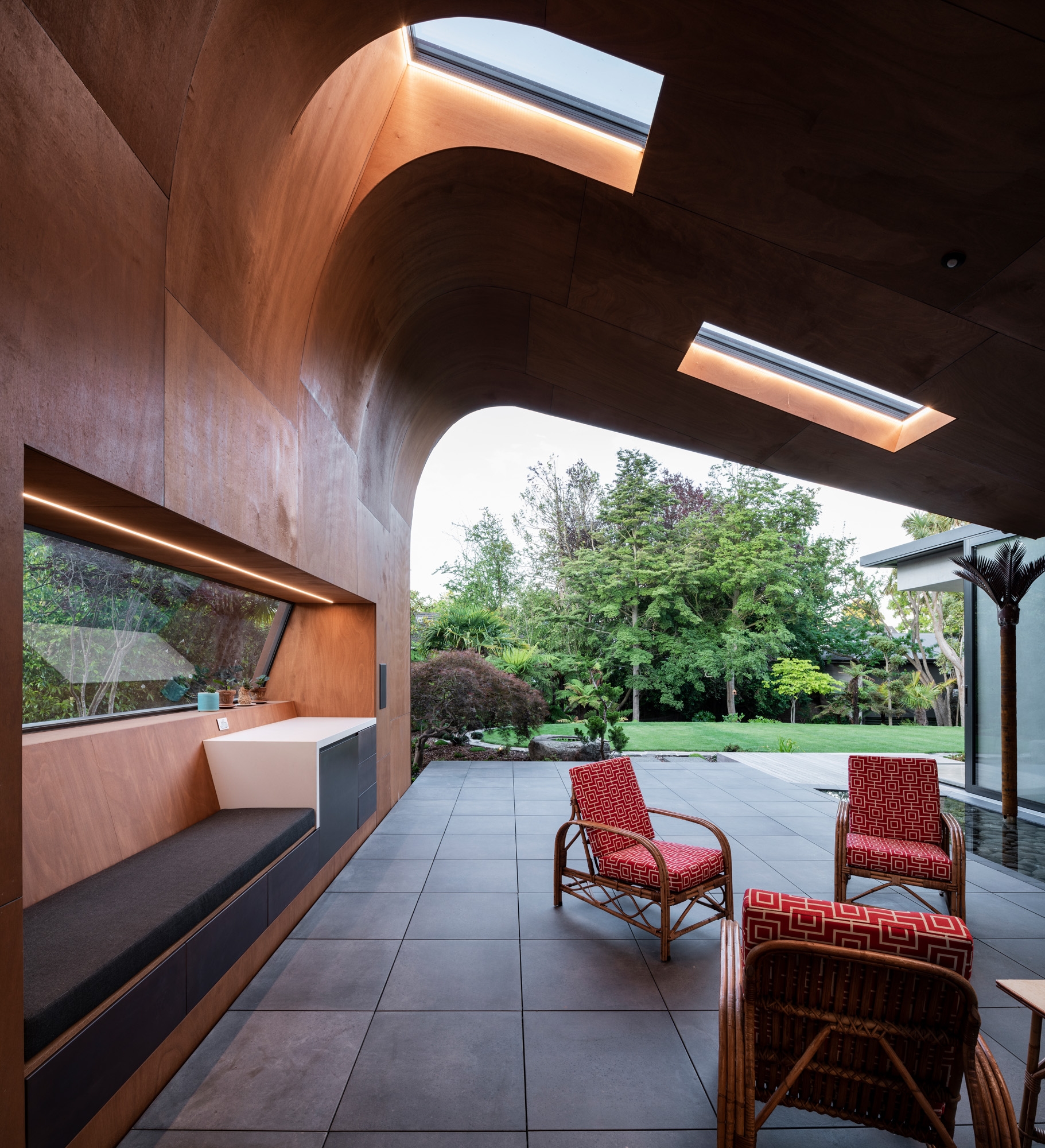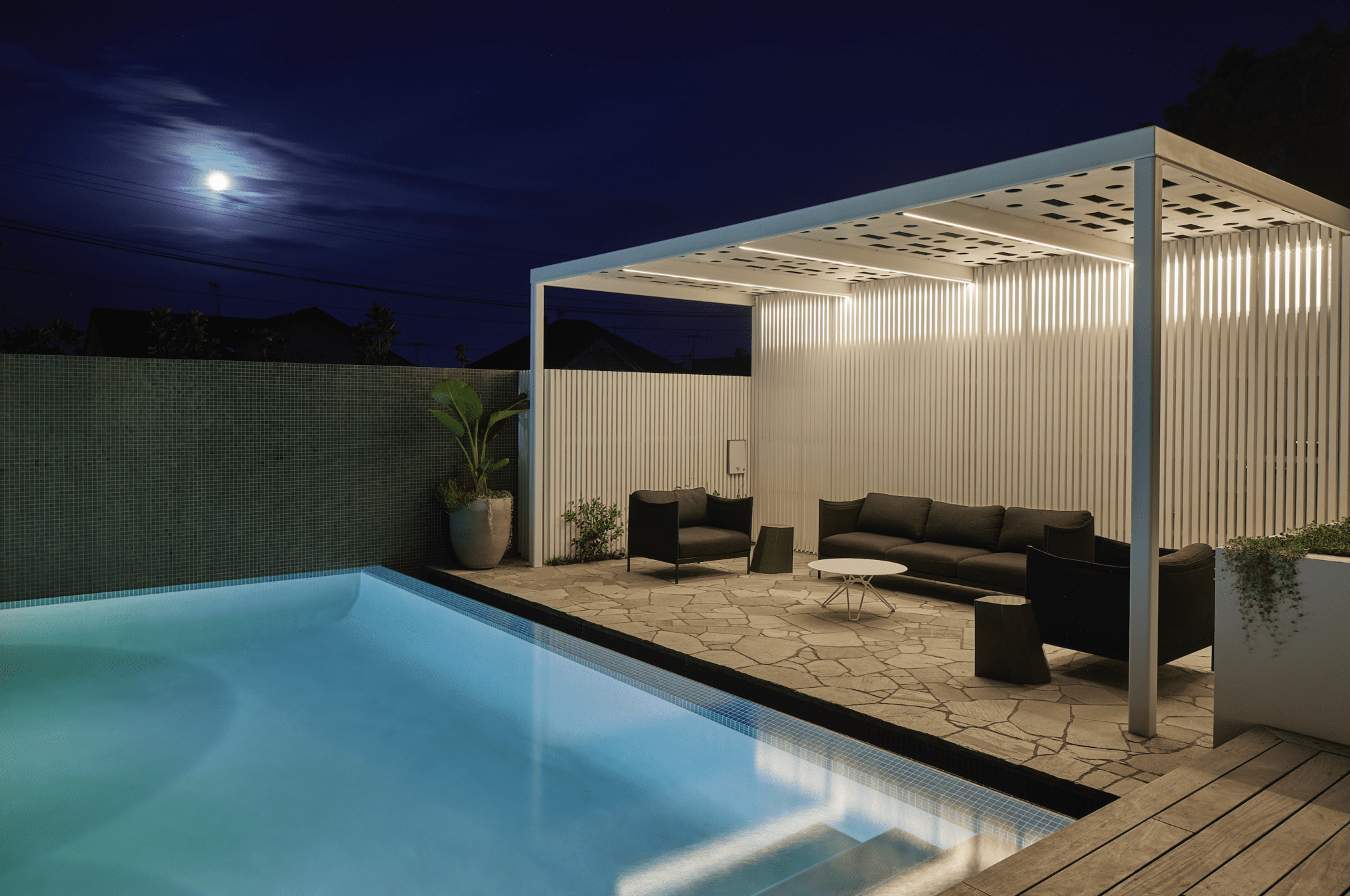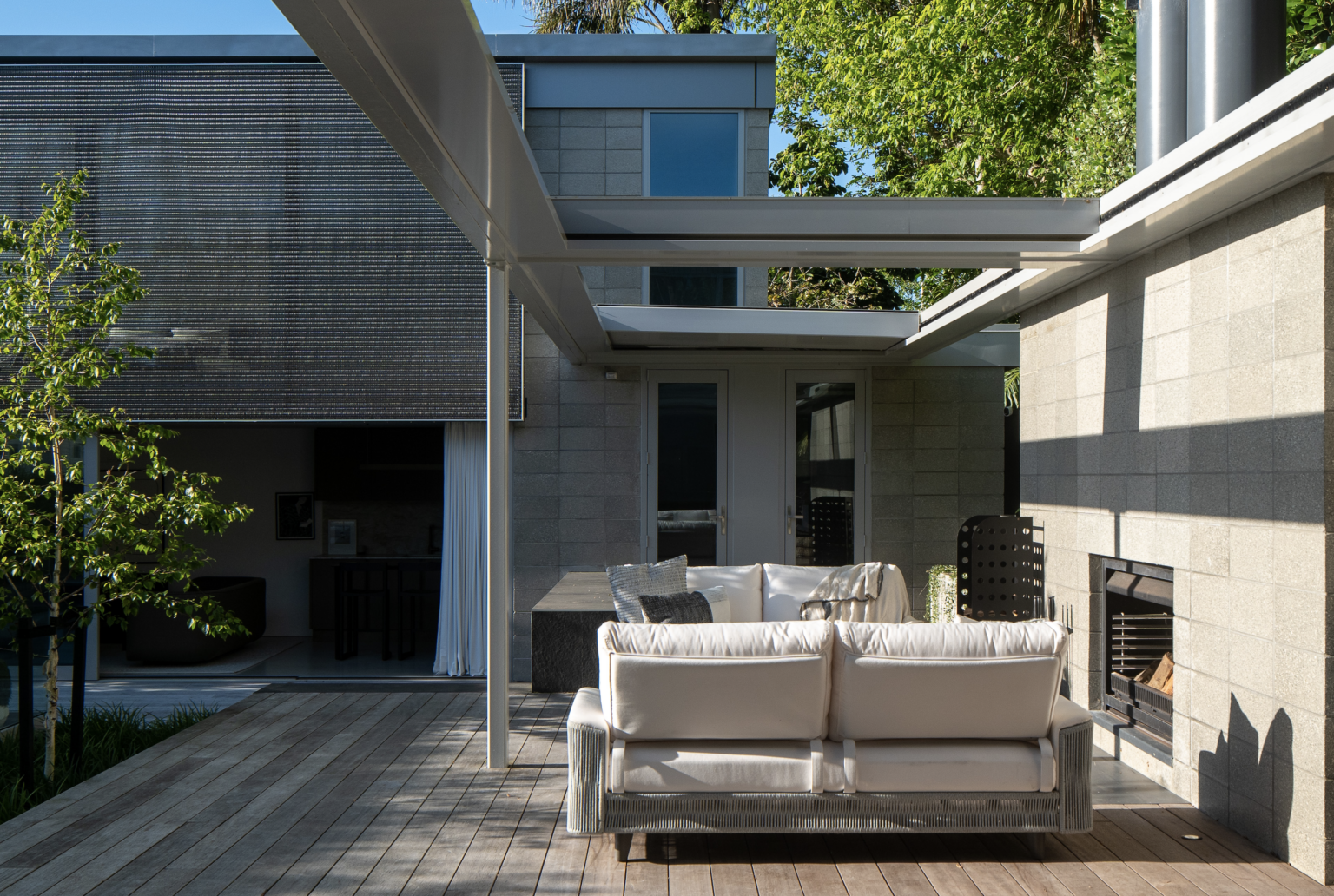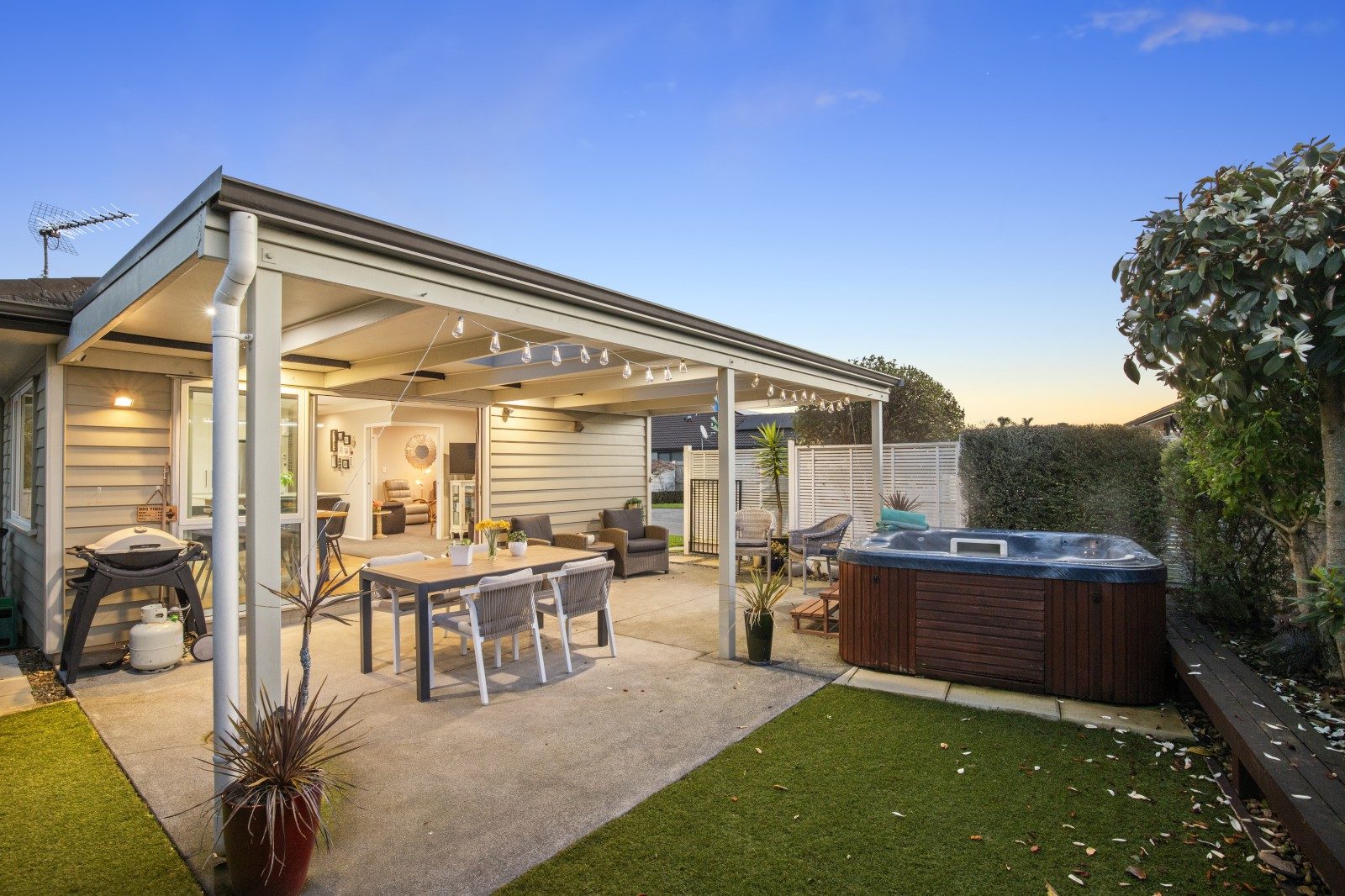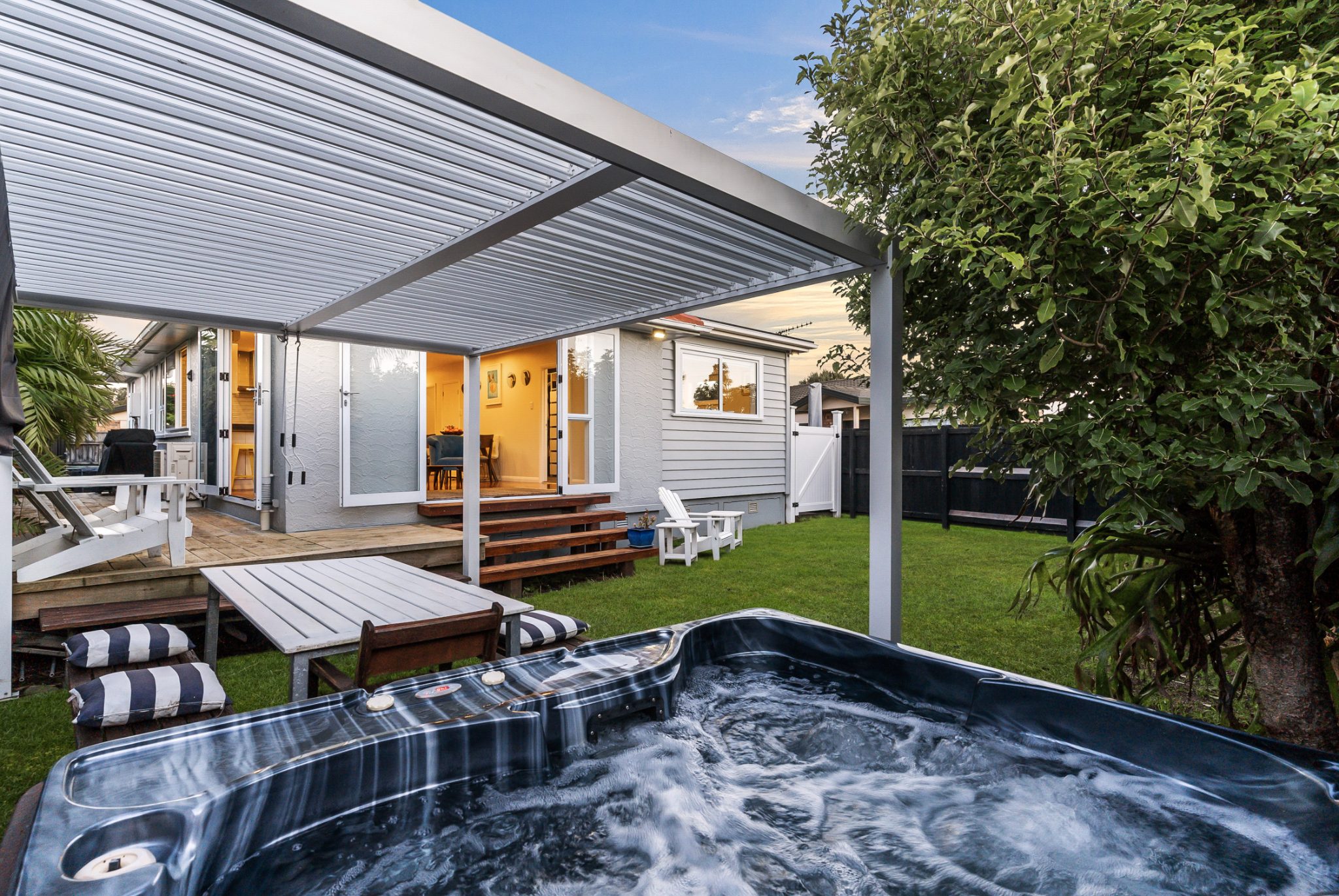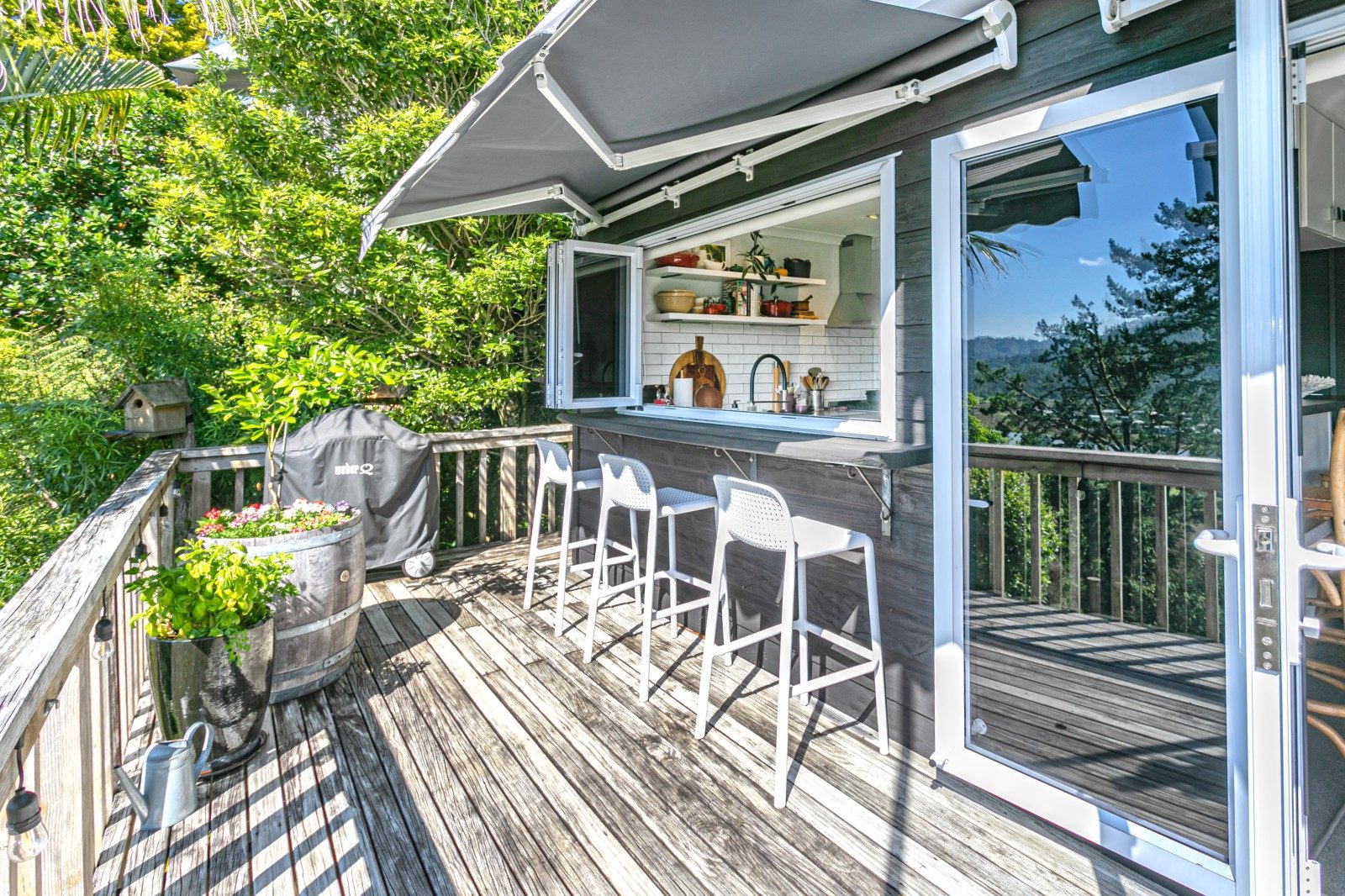Feature article
Three stunning covered deck ideas to extend your outdoor living space
Entertain outdoors year round.
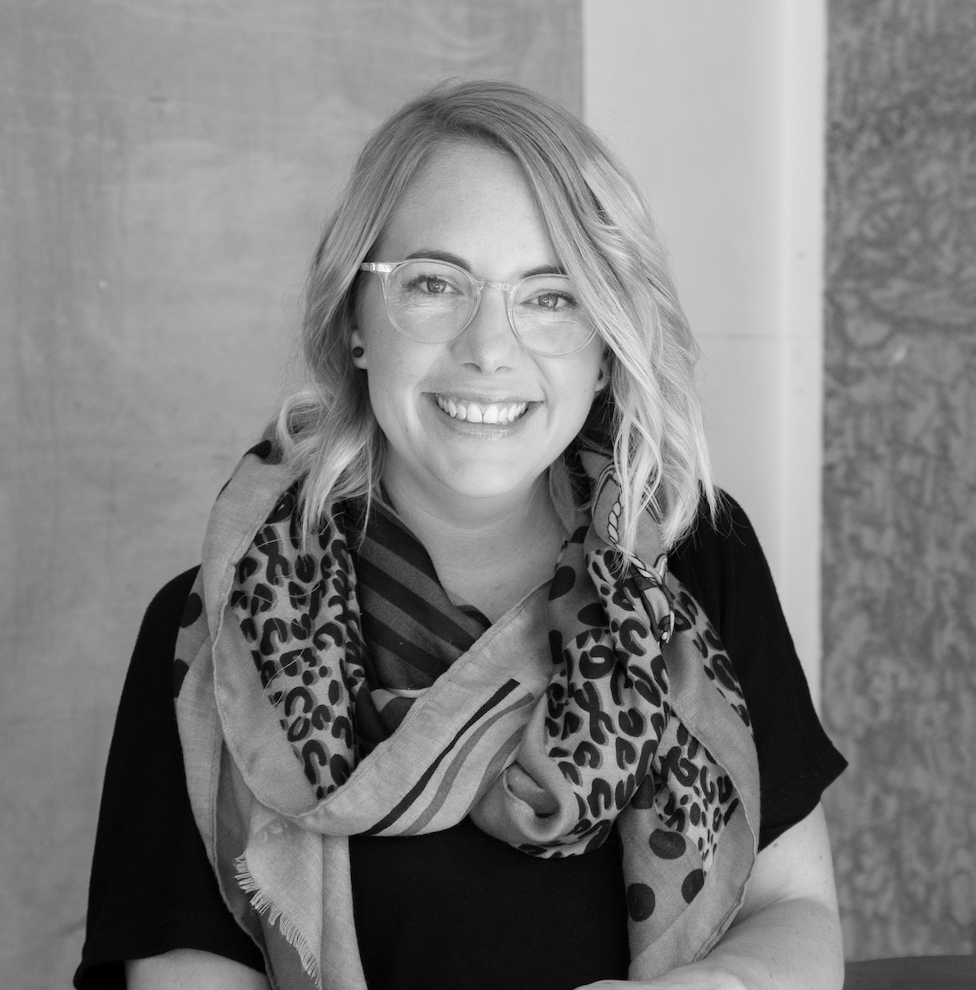
Outdoor living is a large part of contemporary living for us Kiwi and the centrepiece of that is usually a deck. Long, languid summer days and evenings spent dining and entertaining outdoors with friends and family is a cornerstone of the Kiwi way of life.
Unfortunately, for many of us, those evenings fade into memory once the weather closes in and the nights turn chilly and often rainy.
A straightforward way to ensure your deck provides year-round enjoyment is to incorporate some kind of fixed cover that provides protection from adverse weather conditions and allows you to extend your outdoor living well past the summer months.
Cover image: A striking architectural element of its own, this patio features a copper-clad, gaboon plywood-lined structure that provides year-round protection from the elements. Image: Stephen Goodenough.
Here are three stunning examples of outdoor living spaces designed for year-round enjoyment.
1. Concrete Copper House by South Architects
Our cover image was inspired by a heritage church. This suburban Christchurch home uses its sinuous form for both impact and functionality. Concrete Copper was a finalist in the 2021 Home of the Year Awards.
2. Secret Garden by Rogan Nash Architects
Rogan Nash unveils a Western Springs project stitched together by a swimming pool, a pergola, references to Palm Springs, and morse code detailing that reads ‘secret garden’.
Breaking with tradition, this stunning pergola by Rogan Nash Architects features a mostly solid roof, punctuated by morse code ‘dots and dashes’ to create a distinctive play of light and shadows during the day. Image: Simon Wilson
3. Remuera Pool House by Johnston Architects and Bespoke Interior Design
Utilising the existing design language of a mid-century modern home in Remuera, Johnston Architects and Bespoke Interior Design set about redesigning a pool house and creating an outdoor room, resulting in a trio of interconnected areas spanning indoors and out.
This opening roof creates a versatile space to enjoy the sun or take shelter in the shade.
What are the best options for covered decks in New Zealand?
Fixed covers fall into three categories: patio covers, pergolas and awnings.
Patio Covers
Typically, patio covers are attached to the house and have some form of solid roofing, making them an ideal solution to year-round outdoor living, as they provide sun and rain protection. Patio covers come in a variety of materials and designs to suit all types of climatic conditions, especially our tough marine environment.
A combination of aluminium framing and polycarbonate panels creates a sleek, contemporary look with the framing able to be colour-matched to your existing joinery. As an additional bonus, aluminium frames provide added durability and won’t rot or warp over time. Similarly, polycarbonate panels offer excellent thermal insulation and UV resistance, ensuring your deck remains comfortable and highly usable throughout the year.
As pictured at 20 Evans Court, Pukekohe, Franklin, Auckland
20 Evans Court, Pukekohe, Franklin, Auckland
Pergolas
Unlike patio covers, pergolas tend to be free-standing structures — although that is not a hard and fast rule — with an open framework of rafters. Traditionally, pergolas are made from timber and generally include some variety of deciduous climbing plant that provides shade in summer and sunlight during the winter.
A more recent adaptation is the louvred pergola. Sporting an adjustable louvred roof, which can be either manually or automatically controlled, these options allow you to control the amount of sunlight at any given time. Likewise, they can be fully closed when it is either raining or snowing. Many automated options also have sensors that will automatically adjust the louvres as the sun tracks across the sky or will close the louvres in bad weather.
As pictured at 78C Ballarat Street, Ellerslie, Auckland City, Auckland
78C Ballarat Street, Ellerslie, Auckland City, Auckland
Awnings
Awnings are one of the oldest forms of additional covering with examples dating back to ancient Rome and even earlier. Modern-day examples include shade sails — which are generally attached to the home on one side with post attachments on the opposite side or sides — fix awnings above windows to provide shade from the sun, and larger, retractable awnings used to shade deck areas.
An advantage of retractable awnings is that, as they are attached to a wall, there is no need for additional support posts, which means your deck space remains free of any potential obstacles. Retractable awnings can be controlled via a manual crank or fully automated with sensors that retract the awning in during high winds.
Another option, free-standing, retractable awnings, are popular for covering larger deck areas as they consist of a stabilised, central framework with dual awnings opening from either side.
As pictured at 5 Hillside Lane, Tairua, Thames-Coromandel, Waikato
Constructed from powder-coated aluminium, as well as water- and UV-resistant acrylic fabric, retractable awnings can enhance your deck space by providing cover as and when needed.
There you have it, three options for creating the perfect covered deck — all available in a range of sizes and price points that allow you to extend your outdoor living space and keep on entertaining outside well past the summer months.
5 Hillside Lane, Tairua, Thames-Coromandel, Waikato
Author
Other articles you might like
